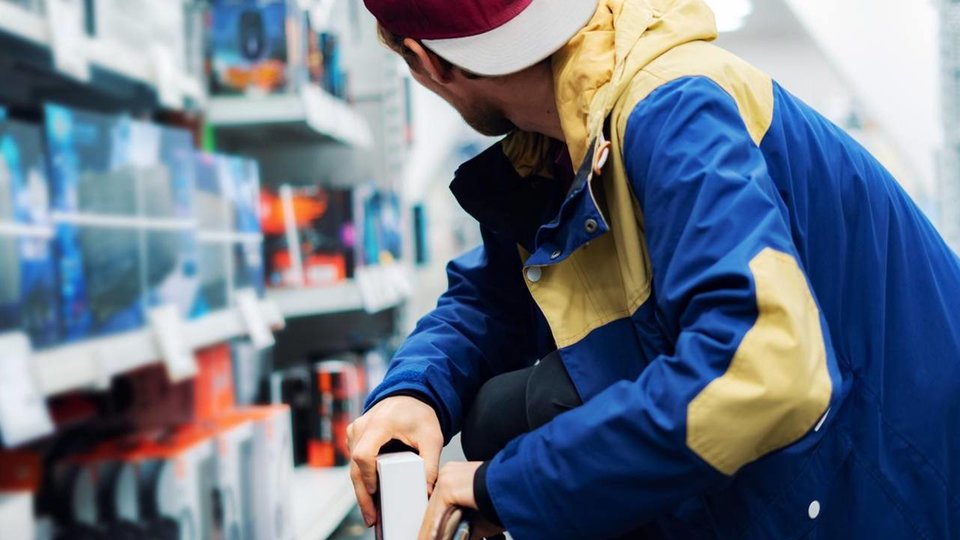
How L&D Helps Reduce Retail Theft
Today’s retailers face a costly problem that’s only bound to get more expensive…shoplifting.
In 2023, stores lost $121.6 billion to retail theft, according to research from CapitalOne Shopping. This number is projected to rise to over $150 billion in 2026.
The rise in retail theft left big retailers hurting – Target reported a $400 million hit to gross profit margin and Dick’s Sporting Goods dropped their profits by 23% in part to increased theft. The time to up security measures is now.
But, where do you start? It’s not investing in state-of-the-art security cameras or bringing in a squad of security guards to stand near every entrance.
It’s training your employees.
Let’s take a closer look at how strengthening your learning and development (L&D) programs can stop shoplifting.
Picture this: A global retailer has hundreds of stores worldwide, and thousands of employees who speak many languages.
Now, think about how much it would cost to get each employee in the same place at the same time to come together and learn. That’s a lot of dollar signs and not very realistic.
It’s not just about geographical scale either. Attrition rates in the retail industry sit high at around 60%. Retailers need to account for high turnover with training that can easily get new employees up to speed as they come on board.
One PowerPoint or outdated employee handbook won’t cut it. Leveling up your training with different learning formats and technology can help you engage employees with training they want to participate in – and that actually sticks.
Your employees are critical to preventing theft. But what if they don’t know what to look for? How will they handle confrontation? That’s where training comes in.
It may not always be as obvious as someone trying to pull a security tag off a shirt or a customer sprinting for the exit and setting off alarms. It could be a fellow employee fudging the numbers on returns to pocket the difference or swapping the sale tags on full-price items.
Training content empowers employees to spot these red flags and shows them how to intervene in the moment. Technology provides delivery formats and channels that make training engaging and relevant no matter where you’re learning from.
When in-person training opportunities were out of the question due to the pandemic, the luxury brand Fendi needed a quick fix for arming employees against thieves. ELB Learning, and our partner, Video Interact, brought the stores to their homes. We used VR to create 360-degree videos for each store. When “walking” through the immersive environment, employees were tasked with identifying specific shoplifting and security risks – opened drawers, unattended fitting rooms, customers carrying suspiciously large bags, and more.
You should also consider formats that keep training “always on.” Microlearning, or content that’s delivered in “bite-sized” chunks, dials in on specific skills that fit the learner's schedules or just-in-time needs. Employees can complete focused modules during a slow period on the retail floor. If they notice something off, like someone lingering a little too long in the store without asking for help or trying anything on, they can tap into a course for a way forward.
Confrontation is tough, especially when it’s calling someone out for stealing. This is why soft skills training should be part of your mix. Soft skills training in theft prevention can include topics like improving problem-solving and critical thinking and knowing when it’s time to escalate a situation.
We’ve found that video-based practice helps build confidence in these sticky situations. Employees can submit their rehearsed responses to managers, get feedback, and continue this loop until people feel ready to turn learning into action.
Thinking Through Scale
Teaching Theft Prevention and Response
How do you know if your retail theft training is working? In Fendi’s case, after implementing the VR course across 1,800 employees worldwide, they saw a 55% decrease in thefts across stores with a 400% ROI. You can also look out for more reporting of suspicious activity, and fewer inventory discrepancies.
But sometimes success is less quantifiable than that. Once employees see their efforts contributing to the bigger picture, they are more likely to keep it up. This sparks a culture of improvement – staying personally proactive and encouraging others around them to do the same.
Employees are your greatest asset – invest in training that shows, not just tells, that. Giving them the tools and confidence to prevent shoplifting and respond in the moment keeps your business and employees safe.





